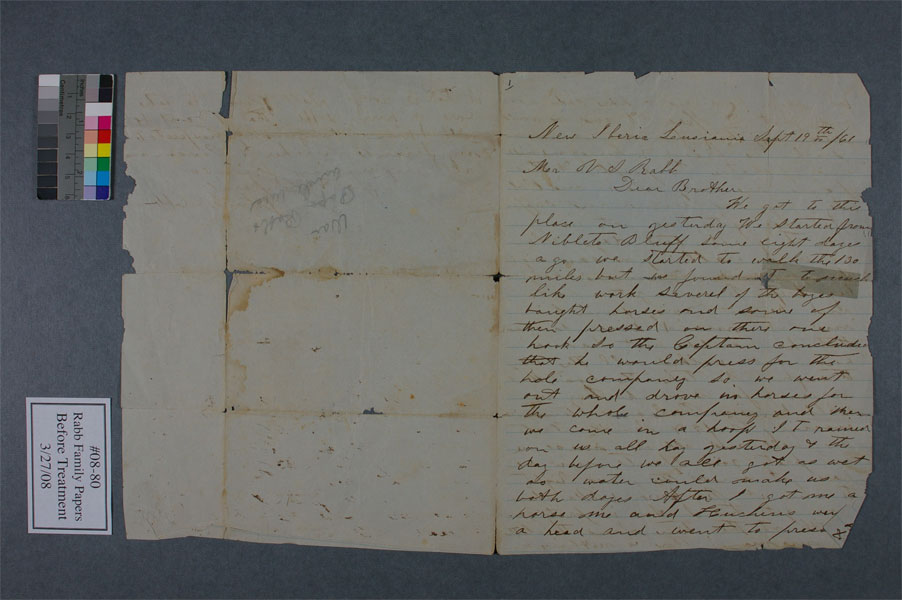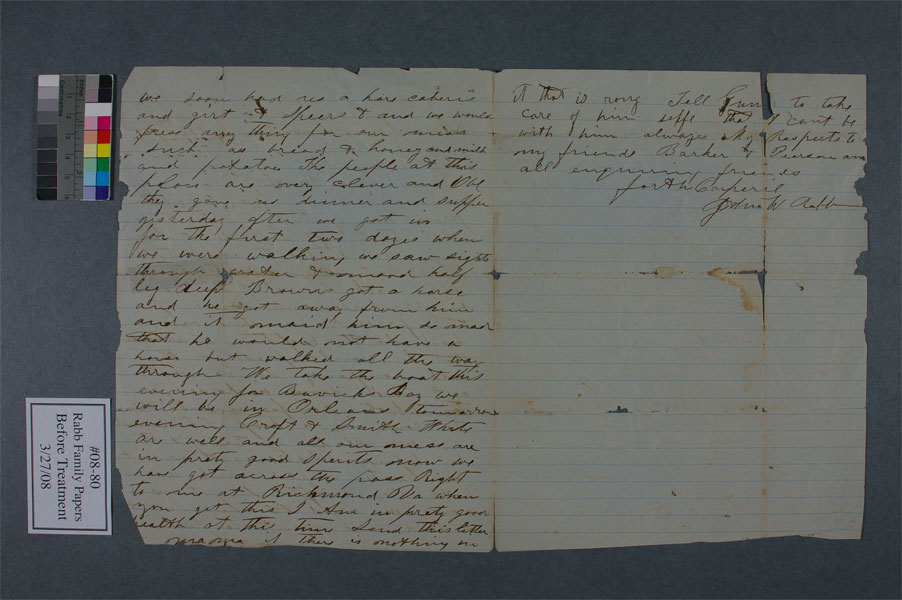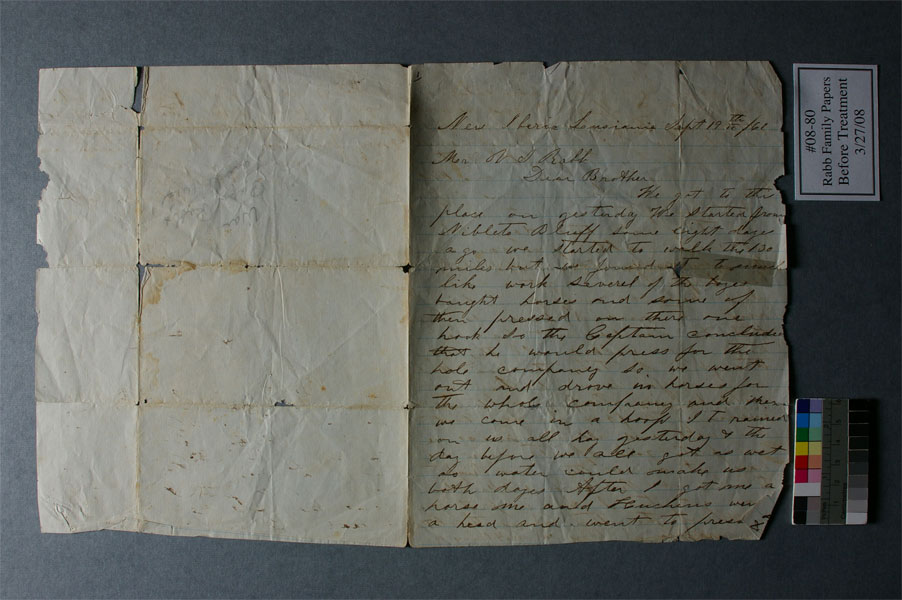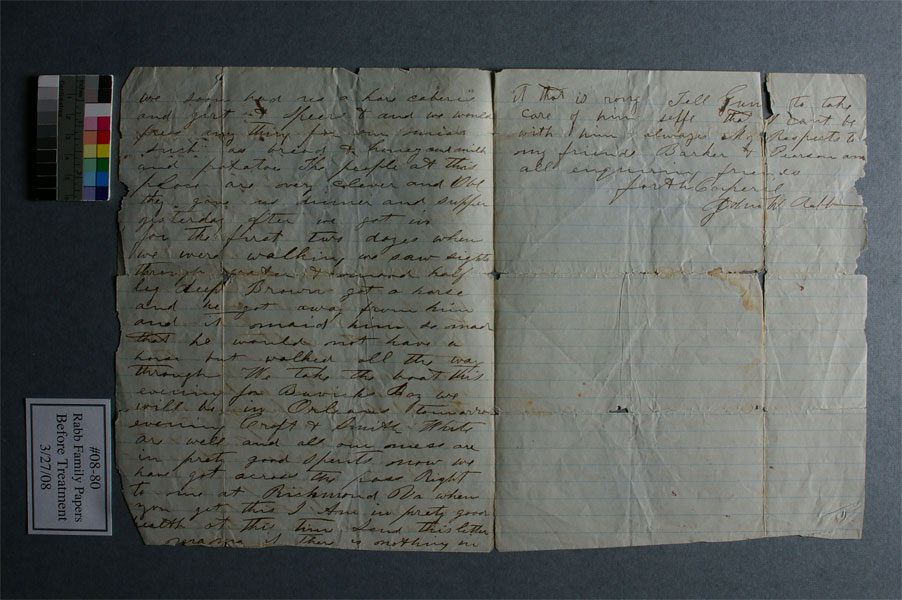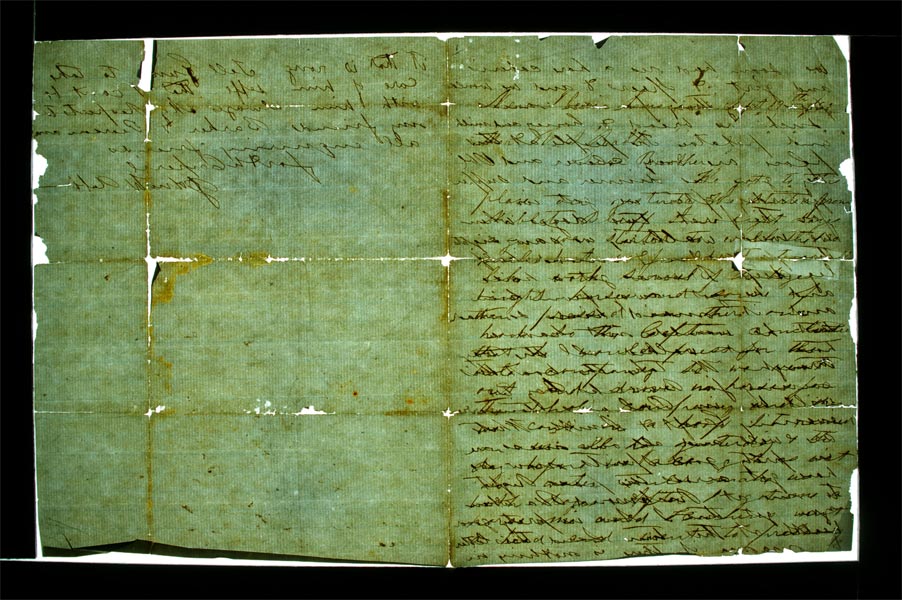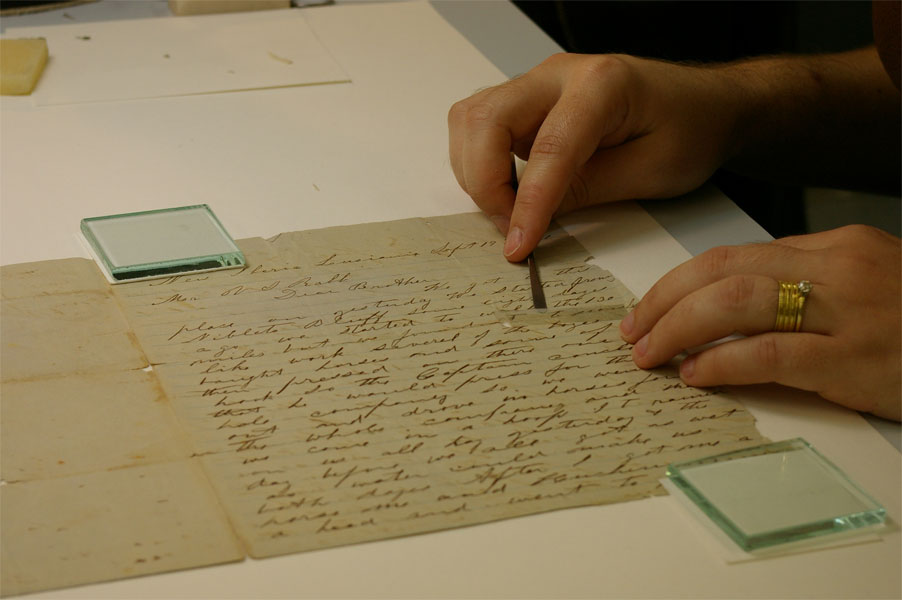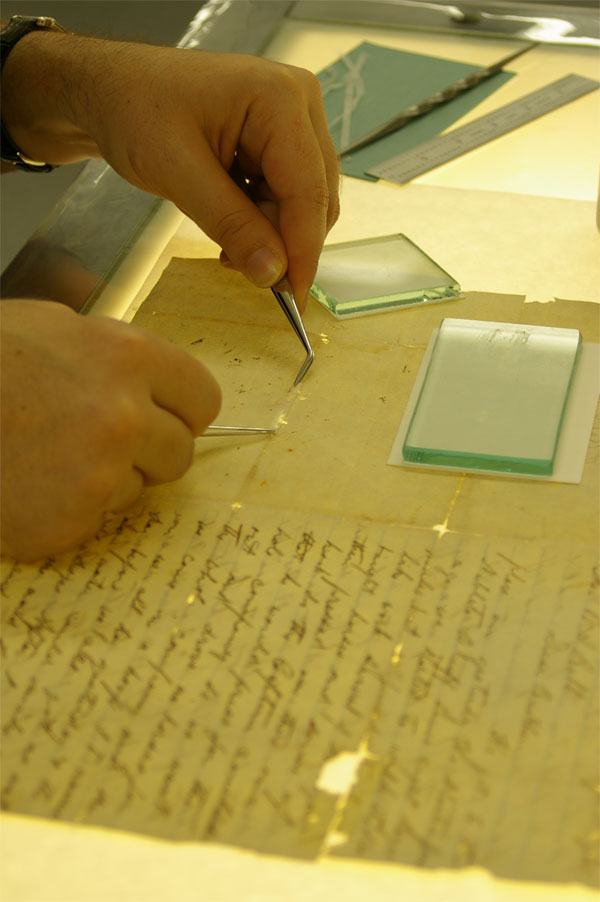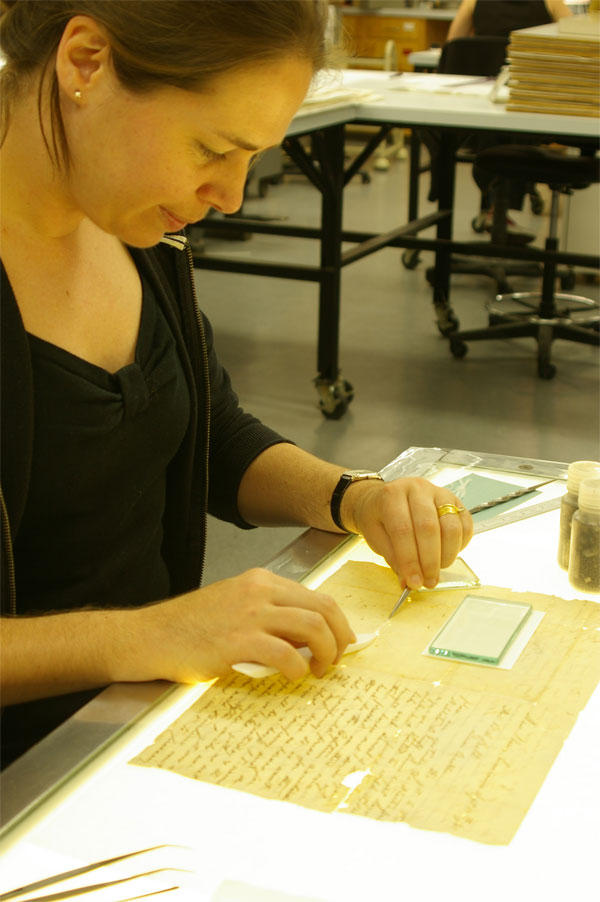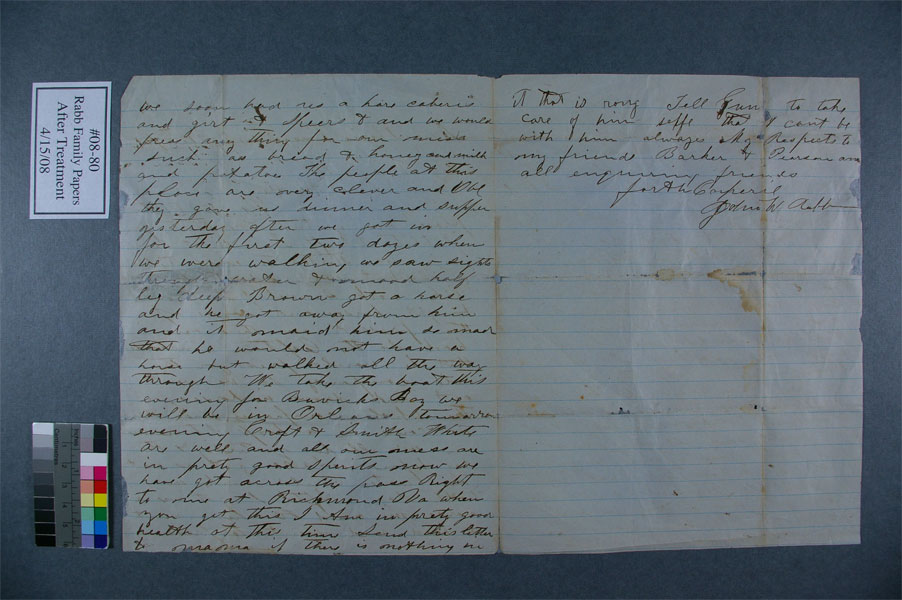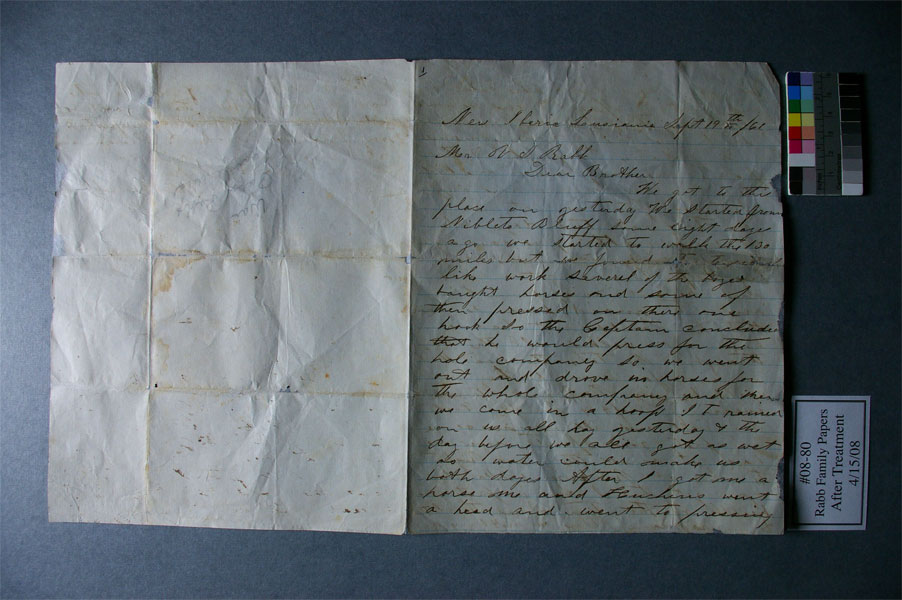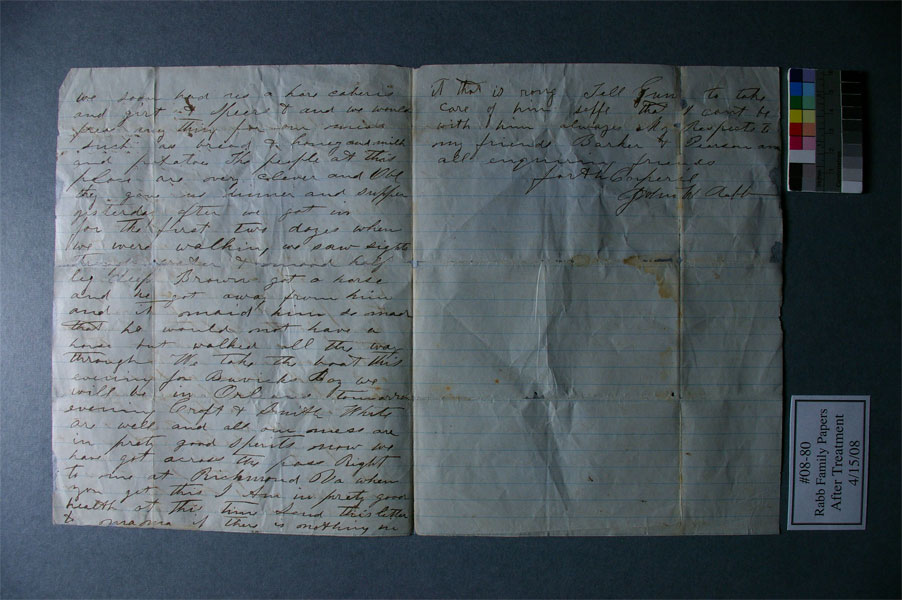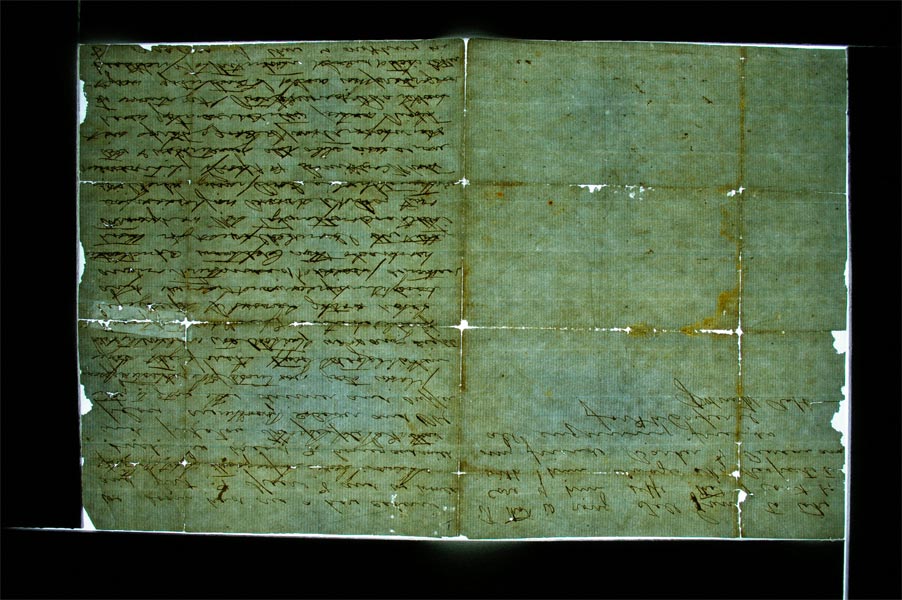Paper Treatments
John W. Rabb Letter to Dear Brother (1861)
Tape Removal, Mending with Toned Tissue
Photo Documention
- Before
- During
- After
Click thumbnails to view images.
Treatment Report
Treatment Objective
Objective of this treatment is to stabilize the document for safe handling and storage in a research institution.
Description
Custodian: Center for American History, University of Texas at Austin
Collection: Rabb Family Papers
Title: John W. Rabb Letter to Dear Brother
Date of Production: September 19, 1861
Place of Production: New Iberia, louisiana
Primary support(hxw): 9 1/4 x 14 1/2 in. 24.8 x 36.9 cm
General
The A.L.S. is written in iron gall ink on a folio of blue ruled machine-made laid paper.
Media
Iron Gall Ink
The ink is heavily applied and covers the first and second pages entirely and the upper quarter of the third page with very tight margins. No iron gall ink is present on the fourth page. The signature just below the last line of writing on the third page appears to be written in the same ink. The writing occurs at regular one-centimeter intervals and consistently overlaps with the writing on the reverse. Under magnification, the edges of the strokes appear darker than the center, indicating the use of a steel-nib pen.
Blue Ruling Ink
Bright blue ruling lines are present on all but the fourth page at about one centimeter intervals.
Graphite
A catalogerŐs annotation, written in graphite, appears on the fourth page.
Unknown Medium
There is a catalogerŐs annotation on the upper left corner of the first page. Possibly written with a grease pencil, the medium appears waxy and dark, purplish black under magnification.
Primary support
The primary support is a single folio of ruled machine-made laid paper. It is blued-white in color, medium weight, and smooth in texture.(1) Under transmitted light, an overall even pulp distribution in evident, as are the laid lines created by the dandy roll. The folio was folded horizontally three times and once vertically approximately two inches from the foredge.
Condition
General
The letter is in poor condition overall with several tears and losses, one of which was previously mended with pressure sensitive tape.
Media
Iron Gall Ink
The black ink has faded to a dark brown color and exhibits a fair amount of sinking. The ink is clearly visible from the verso in ambient light. Consistent with the progression of iron gall ink corrosion, haloing is evident under magnification, and is more pronounced under UV light. In several areas, the ink has burned all the way through the paper leaving small losses.
Blue Ruling Ink
The blue ink is in good condition.
Graphite
The graphite is in good condition.
Unknown Medium
The unknown medium is in good condition.
Primary support
The paper is in poor condition with several tears and losses, and an inappropriate previous repair.
The tears appear primarily along the folds, and there are several small losses along the edges of the manuscript, perhaps the result of insect damage. One tear has previously been repaired using a matte transparent pressure sensitive tape, with a similar appearance to Magic Mending tape. The tape appears on the first page along the horizontal fold just above the middle of the page, one centimeter from the foredge and extends two inches in length. The pressure sensitive tape has caused the staining and darkening of the paper, and is visible from the reverse in ambient light.
There is a small water stain on the final leaf around the folded edges; under UV the stain produces a yellow florescence. The paper is slightly discolored overall, though it remains fairly flexible. Under UV light, the fold lines appear significantly darker, indicating that the integrity of the paper is weakened in these areas. Several tight creases appear around the edges of the paper, especially near the corners.
Testing
The paper fibers are less resistant to the penetration of a tungsten needle in areas where iron gall ink is present, indicating that iron gall ink corrosion is causing damage to the integrity of the paper.
Treatment Proposal
- 1. Remove tape as appropriate.
- 2. Reduce staining caused by pressure sensitive tape as possible.
- 3. Mend tears with long-fiber paper and wheat starch paste.
- 4. Re-house in acid-free folder.
Photography
Digital images have been taken before and after treatment in ambient, raking, and transmitted light. The images include overviews of the recto and verso, as well as details of the previous tape repair.
Possible Effects of Treatment
It may not be possible to remove all of the stain from the pressure sensitive tape.
Treatment Notes
See attached.
Treatment Performed
- 1. The tape was removed using Naptha. 4 hours
- 2. The stain was reduced using Naptha. 1 hour
- 3. The tears were mended with toned lens tissue and wheat starch paste. 6 hours
- 4. The manuscript was re-housed in an acid-free folder. 15 minutes
Total treatment time: 11.25 hours
Notes1 Lunning, Elizabeth and Roy Perkinson. The Print Council of America Paper Sample Book. 1996: The Print Council of America.
Kilgarlin Center 08-80.
CAH, Rabb Family Papers
